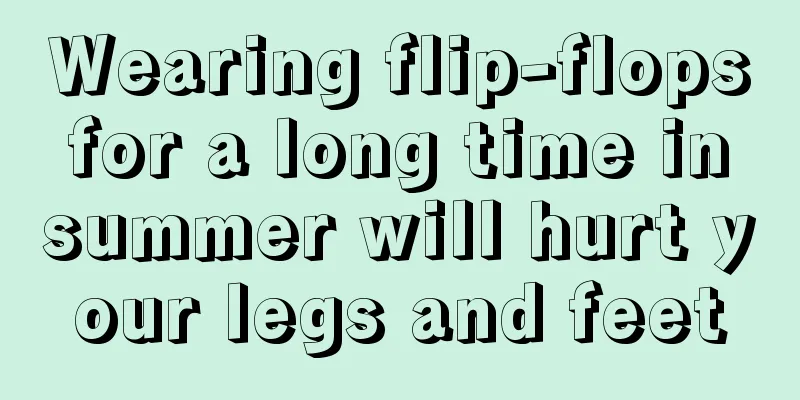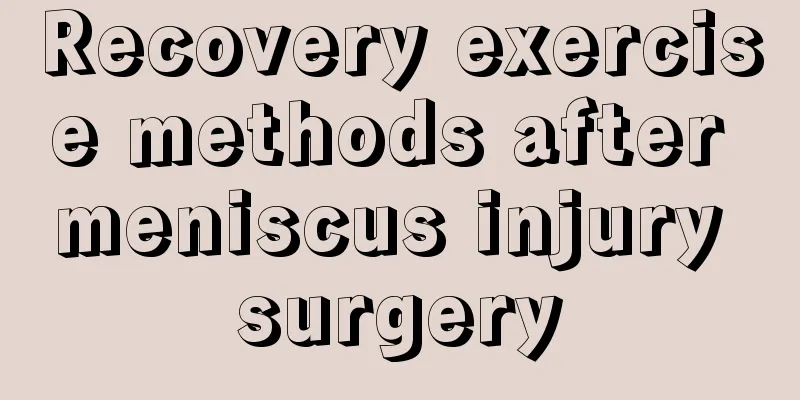Wearing flip-flops for a long time in summer will hurt your legs and feet

|
In summer, many people like to wear flip-flops, thinking they are convenient, cool, and beautiful to wear. Moreover, buying a pair of flip-flops is cheaper than buying other shoes. However, many people don’t know that wearing flip-flops for a long time can cause harm to your legs and feet. Please read the experts' explanation of the seven major sins of wearing flip-flops that can hurt your feet, and at the same time, teach you some tricks to protect your legs and feet.
1. Seven major sins of wearing flip-flops that hurt your feet (1) The soles of flip-flops are made of sponge and cannot provide arch support for our feet. The soles of flip-flops may look soft and comfortable, but most flip-flops are designed with a completely flat and thin sole, so your foot will end up sinking in too much. The soles of normal people's feet have a certain curvature, which can help us cushion the vibration when walking. However, walking in flip-flops is like walking directly on the ground without wearing shoes. They can neither fit the curvature of the soles of the feet nor provide sufficient support for the feet. This can cause pain in the back of your heel, arch, and toes. Flat shoes that are too flat can easily hurt your feet for this reason and are not as comfortable as they look.
(2) They put a strain on your muscles and tendons. Flip-flops do not have a complete shoe design, they only have two thin straps, or only a V-shaped belt across your toes. When walking, they cannot provide enough support for the instep to lift the slippers, and you can only rely on the strength of your toes to "clamp" the two straps. When you walk, you lift your toes last, so the muscles and tendons have to do all the work. In order to hold the shoes more firmly, the toes will unconsciously tense for a long time and curl up to "grab" the soles of the shoes. If this twisted state continues for a long time, it will cause tendon strain under the toes and even nerve inflammation.
(3) Flip-flops can tighten the Achilles tendon and even injure the bones of the foot. If you're used to wearing high heels, flip-flops may end up overstretching your calf muscles. People's foot bones are usually short and thick and not easily injured, but there is a row of relatively slender toe bones in the front third of the sole of the foot that are not as "strong". Flip-flops lack the function of protecting toes, and greatly increase the pressure on the arch of the foot and the surrounding ligament tissue. In addition to causing inflammation, severe cases can also lead to stress fractures of the toes.
(4) Flip-flops do not provide support for the ankles. In the summer, sprained ankles become common because of people's love for flip-flops. Moreover, when wearing thin-soled flip-flops, the body's center of gravity will unconsciously lean forward, greatly increasing the pressure on the ankle, easily leading to calf muscle sprains and plantar fasciitis. Over time, the cartilage tissue between the ankle and knee bones will also degenerate, leading to bone hyperplasia and even the appearance of bone spurs.
(5) They can cause hardening of the skin and cracking of the heels. The constant slapping of your shoes against the back of your feet can make your skin tougher, and because your feet are exposed to the air, the skin can also become dry. If it gets too dry, the hard, dry skin will crack and bleed, which must be very painful.
(vi) They can also cause pain in the hip joints and lower back. When wearing flip-flops, you tend to unconsciously change your gait, walking faster and taking smaller steps. This way of walking can easily cause pain in other parts of the body. Flip-flops are very uncomfortable to wear, so in order to avoid the embarrassment of the shoes flying off with the feet, we often deliberately shorten our steps and turn our ankles inward to "hold" the shoes. The center of gravity of the body leans forward, the knees will naturally bend, and the spine at the waist will also bend. Over time, not only will your steps become childish "inward-turned feet", but your knees and spine will also hurt, and it may even cause problems such as sciatica.
(7) The feet are more susceptible to trauma. When people walk on gravel or muddy roads, flip-flops provide no protection at all. Think back to when you wore flip-flops and suffered a lot of cuts, punctures, and scrapes. Sandals with straps are a healthier choice. Not only do you not have to bend your toes to hold the shoe in place, but they also provide better ankle and heel protection. Of course, we're not saying you should ditch flip-flops altogether. They’re great for the beach and pool, or in the shower at the gym. If you must wear flip-flops, don't forget to protect your feet. Here are some ways to protect your feet.
1. Teach you four tricks to protect your feet (1) Wear flip-flops for no more than 1 hour Telling you about the harm that flip-flops may cause to your feet does not mean that you should never wear flip-flops. It just means that you should not walk in them for a long time. You should take a break after walking in them for more than 1 hour. So don't wear flip-flops when traveling. Another thing to note is that flip-flops, like sneakers, should be replaced after 3-4 months of wear. If the soles become worn or crooked, they must be replaced promptly.
(2) Soak your feet in hot water with coarse salt If you have been running around all day and your feet feel particularly tired and sore, you can mix coarse salt with hot water and give yourself a "foot bath" for 10-15 minutes. This can help relieve discomfort in your feet, promote blood circulation in your ankles and calves, stretch your muscles and veins, and improve stiffness in your lower limbs.
(3) Self-service foot massage After taking a hot foot bath, if your feet still feel sore, you can also do a self-service foot massage. First, apply a layer of moisturizing lotion on your hands and feet, then use the thumbs of both hands to press the arch of your feet alternately. Do not just massage the painful part of your feet.
(IV) Simple “physical therapy” For "broken bones" diseases, rehabilitation-type physical therapy is always more helpful for recovery than drug therapy. Here I will teach you a simple foot exercise: lightly step on a small ball (a tennis ball will do) with your foot, and use the strength of the sole of your foot to gently roll the ball. This can massage and stimulate the acupuncture points of the arch of the foot, as well as stretch the calf muscles. If your symptoms are severe, it is recommended that you go to the hospital for professional physical therapy to enhance the therapeutic effect. |
<<: Beware of five types of food poisoning in summer
>>: The detoxification and health care method of the “sweating” expert
Recommend
What are the effects of drinking water boiled with hawthorn, lily and rock sugar?
Hawthorn is a very common fruit in people's l...
How do the sympathetic nervous systems affect the heartbeat?
The sympathetic nerves are an important component...
The most common symptom among patients with esophageal cancer is difficulty swallowing
The most common symptom of esophageal cancer pati...
What are the common symptoms of colon cancer?
The symptoms of colon cancer are relatively rare ...
Treatment for right shoulder muscle pain
With the improvement of modern living standards, ...
Prostate hyperplasia and prostate cancer
Prostate cancer is a malignant tumor that occurs ...
How to clean urine stains on a Simmons mattress?
When the baby grows to a certain stage, parents n...
What are the dietary taboos one year after breast cancer surgery
Dietary taboos one year after breast cancer surge...
Female age is one of the causes of cervical cancer
Experts say that since cervical cancer is difficu...
Explain in detail the common treatment methods of lung cancer
Lung cancer has become a highly prevalent oncolog...
What should I do if I have a sore throat and a stuffy nose
Sore throat and stuffy nose are mostly caused by ...
It is important to prevent pancreatic cancer
Pancreatic cancer is one of the common digestive ...
What are the symptoms of lung cancer and stomach cancer?
The early symptoms of lung cancer and stomach can...
What can I use to wash off blood stains
In our lives, many people have blood stains on th...
What harm does loose salt do to the human body
The salt content in the food we eat every day var...









